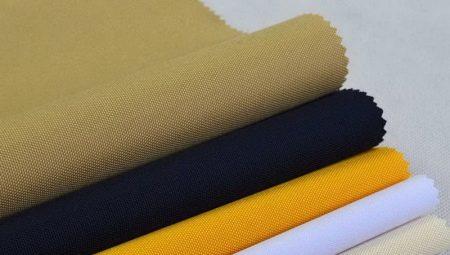Man made friends with polyester for a long time, back in the early 40s of the last century, and this friendship continues to this day. Polyester is present everywhere in our life, but first of all in clothes and household items.

What it is?
Polyester is a type of fabric. The raw materials for its manufacture are polyester fibers, which are obtained in the process of refining petroleum products. Polyester production began in the 30–40s of the XX century. In our country, he appeared back in 1949 and went into production in the 60s. In the 70s in the United States, everyone was already talking about magical fabric that you can not wash for several months, but it will still be like new. True, in the USA and in other countries it was called in a completely different way - Dacron, Melinex, Terylene, and in the USSR - lavsan.
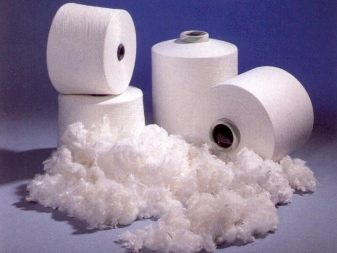
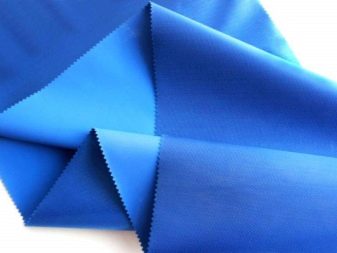
Natural fabric or synthetics?
Polyester, of course, is a synthetic type of fabric, but it rightfully takes the first place among all the variety of synthetic material.
As part of the fibers of the polyester fabric, pure processed polystyrene released from refined oil. In the production, polystyrene is melted to obtain liquid polyester and chemical cleaning of the product is carried out. Then it is passed through narrow openings in order to obtain thin polyester fibers. Next, the fibers after processing go to the manufacture of fabrics.
Such a brief description of the production of fabric gives the concept that polyester is a pure synthetics obtained from synthetic materials. Of course, various natural fibers can be added to it in order to improve the quality of the resulting material. Thus, the manufacturing process itself depends entirely on what fabric and with what properties you need to get at the output.
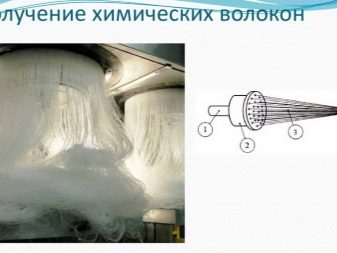
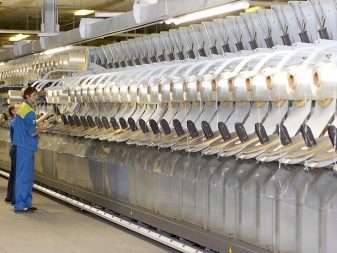
Advantages and disadvantages
Of course, polyester has more pros than cons. Polyester fabric has a very wide application not only in everyday life, but also in production. The pluses include:
- good wear resistance;
- ease of tissue care;
- lack of molting;
- color stability of the fabric to sunlight;
- lack of spools on the fabric;
- high speed drying;
- hypoallergenicity;
- heat preservation;
- low absorption of dirt and oil;
- low price.
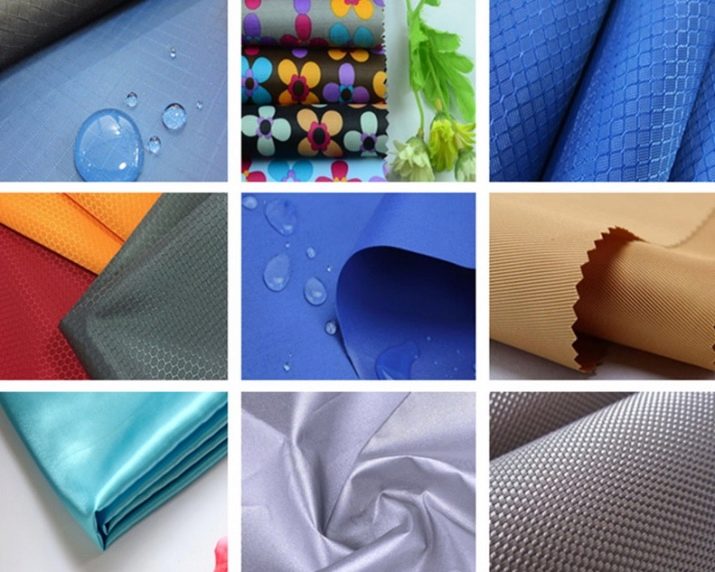
Cons of polyester is also present.
- In addition to dirt, polyester, unfortunately, does not absorb moisture. In connection with this fact, products made of polyester fabric are not very comfortable in the summer. It is hot in it - it does not “breathe” at all due to its high density. That is why doctors do not recommend wearing clothes made of polyester for people with a high degree of sweating.
- Some experts have a negative attitude to wearing things made of polyester due to the presence of monomers in the fabric.
- Polyester fabric, among other things, is poorly stained, and also it can not be washed at high temperatures.
- Polyester is highly electrified and cannot be ironed or bleached.
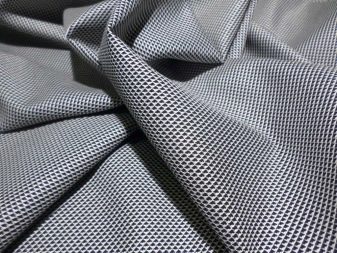
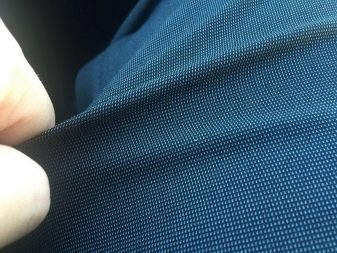
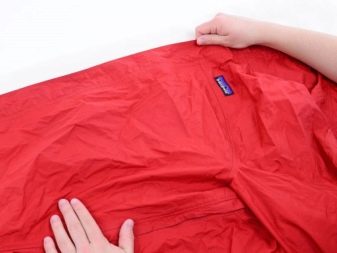
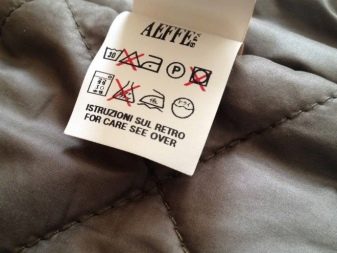
Species and their properties
There are many types of polyester, but not always on the clothing tags you can see the inscription "100% polyester". Specialists have long noticed that if in the production of this material any other component is added to the polyester raw material, then its properties can be changed and improved.
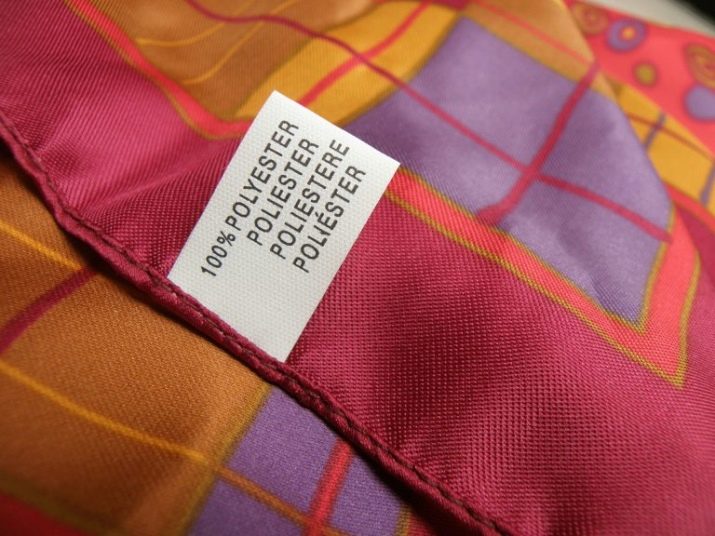
For example, when cotton is added to the fabric, its hygroscopicity can be increased. Such material does not fade, dries quickly after washing, so it is just perfect for bedding.
But with the addition of elastane or spandex, the polyester fabric will become more elastic. It is made of tight-fitting things that stretch well: stockings, socks, underwear. True, these things are not recommended to dry in the open air because of their rapid burnout in the sun.
Polyamide is often added to polyester fabric. Thus, the material becomes like a silk canvas. It does not fade in the sun and perfectly retains the shape that is attached to it, and also such a fabric hardly gets wet.
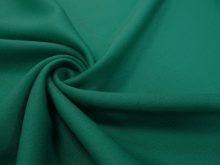
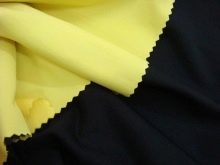
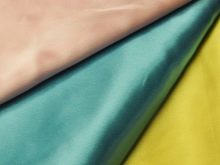
Polyester also increases the strength characteristics of a material such as viscose. Moreover, it becomes more resistant to molting. There are two varieties - woven on a loom and non-woven fabric. The definition of this or that variety depends on the method of production of the material, for the manufacture of which either weaving machines are used, or the fibers of the material are combined in various other ways.
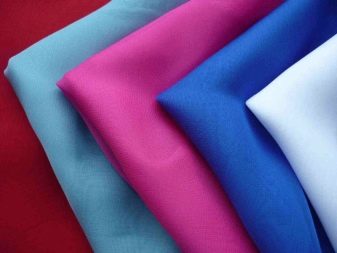
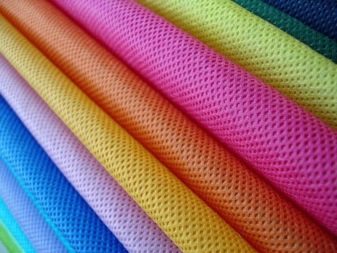
Comparison with other materials
As soon as polyester entered production and then onto store shelves, consumers unwittingly began to compare it with other types of fabrics, primarily cotton, although this is not entirely correct, because these fabrics are made from different types of raw materials: polyester is a synthetic material, and cotton is a natural fabric.
Nevertheless, they are often compared in order to determine what is better - natural fabric or synthetics. Some will say that comparisons are superfluous, because cotton definitely wins in this dispute. It is soft, breathable, and absorbs moisture perfectly.

Yes, in the summer, cotton really has no rivals. But in winter, polyester occupies a leading position, since winter clothes are made from polyester fabric. In this case, polyester acts both as a fabric and as a heater. There are simply no peers in the cold. It is more expedient to compare polyester with acrylic. Acrylic is the same synthetics, the production of which uses fibers from refined oil, only they are thicker and more wavy. Acrylic is often used to make warm sweaters, hosiery and rugs.
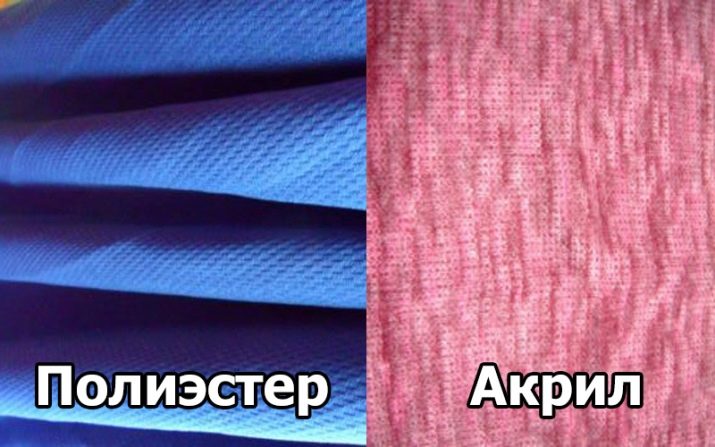
The difference between acrylic and polyester is that pellets often and very quickly form on the acrylic, which spoil the entire appearance of the thing, and therefore clothes from it become unusable in a fairly short time.
The advantages of acrylic are its softness, it is not subject to shrinkage, does not crease at all, while maintaining a neat appearance. They wash clothes from acrylic in the same way as polyester - at a water temperature of no higher than 40 degrees. Acrylic dries after washing too quickly.
In production, acrylic is often mixed with wool, producing an excellent material with all the advantages of wool and acrylic. It is warm, fluffy, breathable. This is another similarity between acrylic and polyester - it combines perfectly with natural fibers, which undoubtedly improves the quality of both materials.
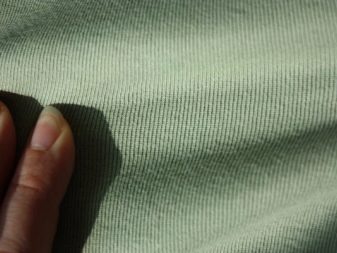

Many often compare sintepon and polyester, not knowing that synthetic winterizer - this is polyester, that is, the type of polyester filler. The modern synthetic winterizer has evolved markedly since when polyester fabric and synthetic fillers only began to appear on sale.
At that time they were not of the best quality due to the use of glue for gluing it. Nowadays, in synthetic winterizer there are no third-party gluing components, it has become much thicker and more voluminous. In addition, the modern synthetic winterizer does not slide into lumps inside clothes, such as fluff, and also retains its appearance even after many washes.
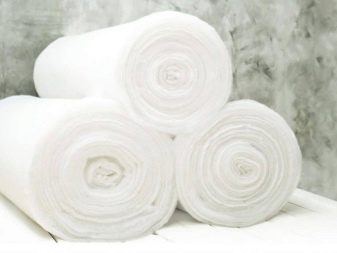

Viscose is a precursor to polyester. It appeared earlier, so consumers and specialists know more about it, but as soon as polyester appeared on the market, it immediately began to compete with it and drive it out of store shelves. This happened due to the strength of the polyester fabric, than viscose, alas, can hardly boast.
As well as the advantages of polyester in comparison with viscose, we can name a more tolerant ratio of polyester to bleaching and boiling. With viscose, such manipulations are prohibited, otherwise you can permanently ruin the fabric.
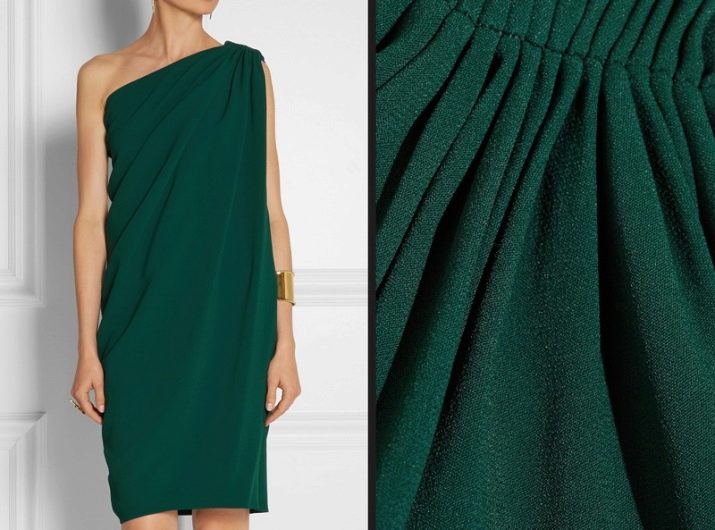
But viscose also has many advantages. Due to the fact that viscose is a product obtained chemically from natural raw materials (cellulose), it has all the positive qualities of a natural fabric - it does not roll, it smoothes well, absorbs moisture, and does not cause allergic reactions. And this fabric has a beautiful sheen that resembles silk overflows. Polyester fabric has a more metallic sheen, as well as a denser fabric texture.
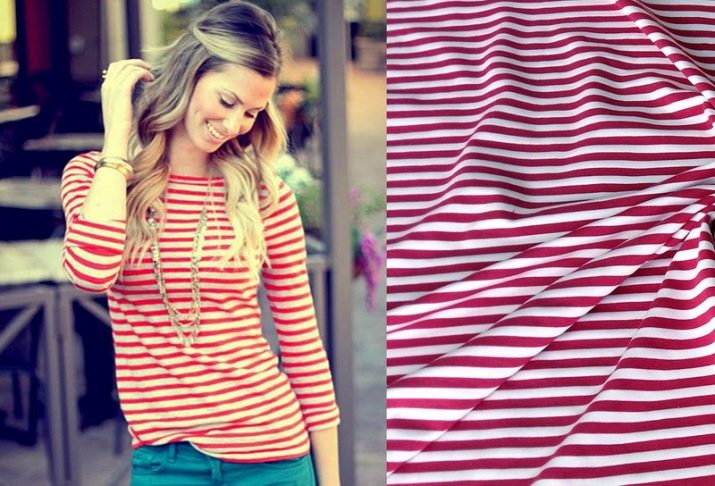
The advantage of such a material as microfiber over polyester is that this synthetic material has the ability to “breathe”, and therefore both bedding and sportswear are sewn from it. Microfiber, unlike polyester, absorbs moisture well, but it also has its drawbacks. It can be ruined by stroking only once. In addition, she does not tolerate bleaching agents.
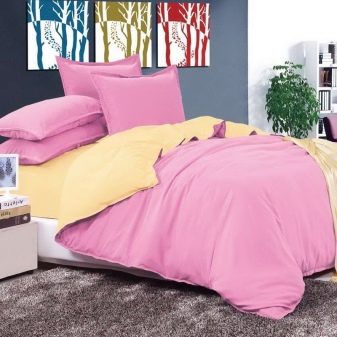

Like polyester, microfiber holds its shape well, does not have the ability to stretch and is resistant to color loss.
Areas of use
One of the advantages of polyester is its versatility. In this regard, it is used both as a fabric and as a heater in winter clothes. In this form, it is used not only in winter equipment for adults, but also in overalls for young children, and it performs its function no worse than sintepon and fluff. Warm clothes on a polyester lining cost several times less than, for example, the same down-padded coat on a fluff-feather insulation. And this is another advantage of the polyester material.


In winter clothes, polyester is used not only as a heater. For the most part, all winter clothing is made of polyester fabric. All thanks to its crush resistance, ability to maintain its shape and low hygroscopicity, which is very important in rainy or snowy weather. Such clothes will not let you down in winter on a warm snowy day or in severe frost.
Polyester fabric has found its application in clothing for athletes. Of course, in the manufacture of such clothes not pure polyester is used, since it is completely non-hygroscopic. But in the composition with cotton fibers, it acquires the ability to absorb moisture. Elastane is often added to such a fabric, due to which the material stretches well and does not hinder movements, which is very important for people involved in active sports.
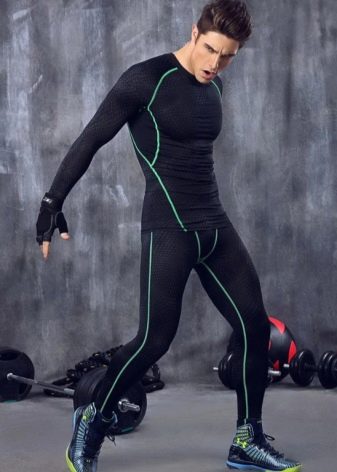
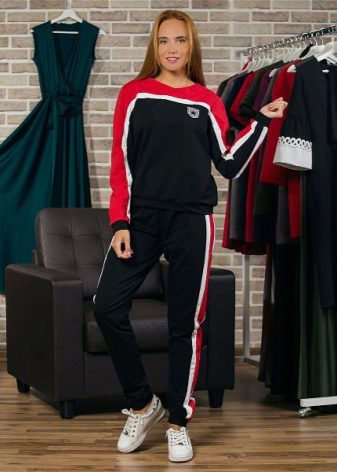
Polyester fabric is also used for the manufacture of bags, backpacks, camping clothes, tents and other camping equipment. Polyester is applicable in the manufacture of curtains and tulle, as well as other home textiles.
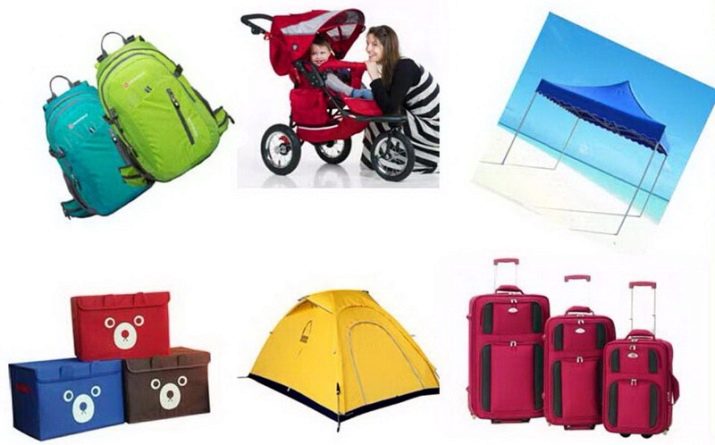
The subtleties of care
The most important point in caring for the polyester fabric is the correct washing mode. Fortunately, now in washing machines there is no need to think about what temperature to set and how many turns to wring the fabric, since the machine itself, in accordance with the specified program, selects the desired temperature and other characteristics of the wash. The hostess only needs to turn the pointer to the desired type of fabric, for example, “Synthetics”.
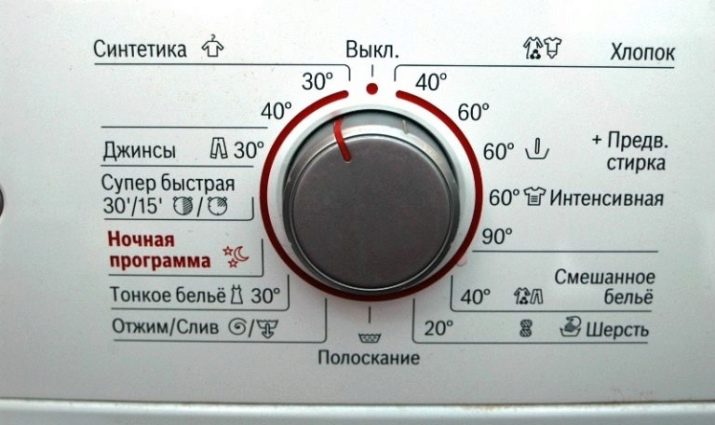
If the polyester is washed by hand, then you need to remember that This fabric must not be washed in water, the temperature of which exceeds the mark of 40 degrees. And, of course, you always need to look at the fabric tags on the product. They may bear prohibition signs regarding machine wash and dry cleaning.
In addition to these data, on the tags you can see instructions for ironing synthetics. And if there are no fabric type indicators on the iron, then comments on the tag will be very helpful. The number of dots on the sign of the iron usually indicates at what temperature it is allowed to iron this or that thing. In general, polyester fabric is completely undemanding: it almost does not wrinkle, does not fade, and simple dirt can often be removed almost immediately after they appear with an ordinary wet towel.
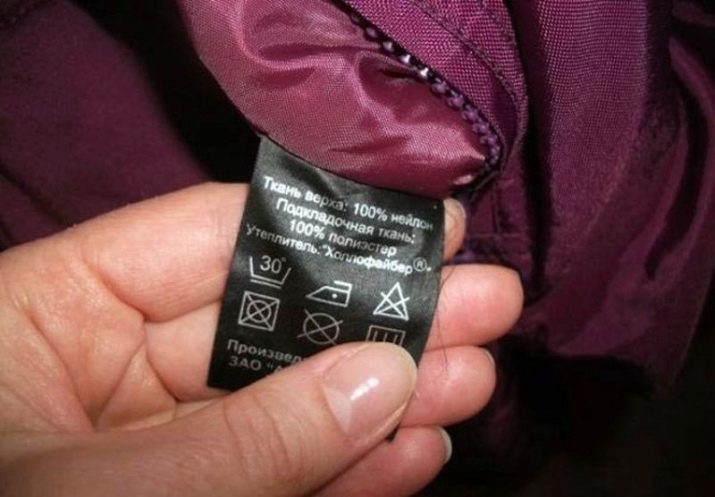
Reviews
Previously, when they saw the indication of the presence of polyester on the clothing tag, many people mistrusted it, since they believed that natural fabric was much better, more beautiful and more useful.
They did not trust the polyester for very short time, since it quickly gained its audience, and the quality of this fabric only got better over the years. And now it is rising. Some of its variants, when adding various components, even surpass the properties of the same wool or cotton.
Most often, buyers leave positive feedback about winter clothing, which is made of polyester. Many note its excellent qualities, especially a low degree of wetting and cremability. Often, young mothers note that children's overalls on polyester are no worse than downy counterparts, and they consider the greatest advantage of polyester items to be that after washing these items retain their original appearance. Consumers like that after drying clothes there is no need to spend time on leveling the fallen material inside the overalls.
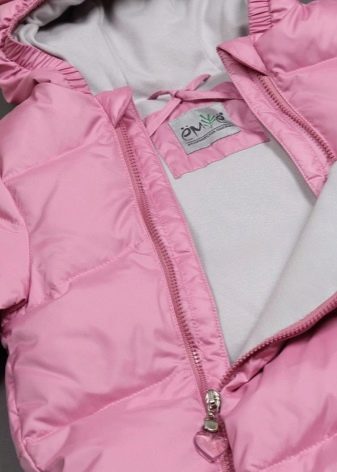
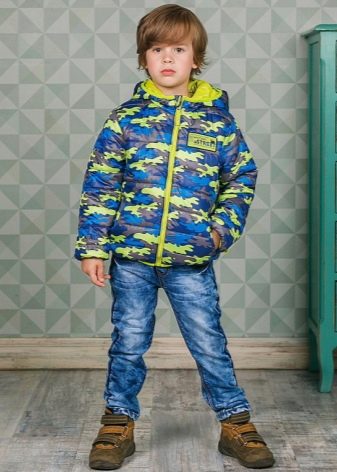
See how the polyester is made in the next video.
